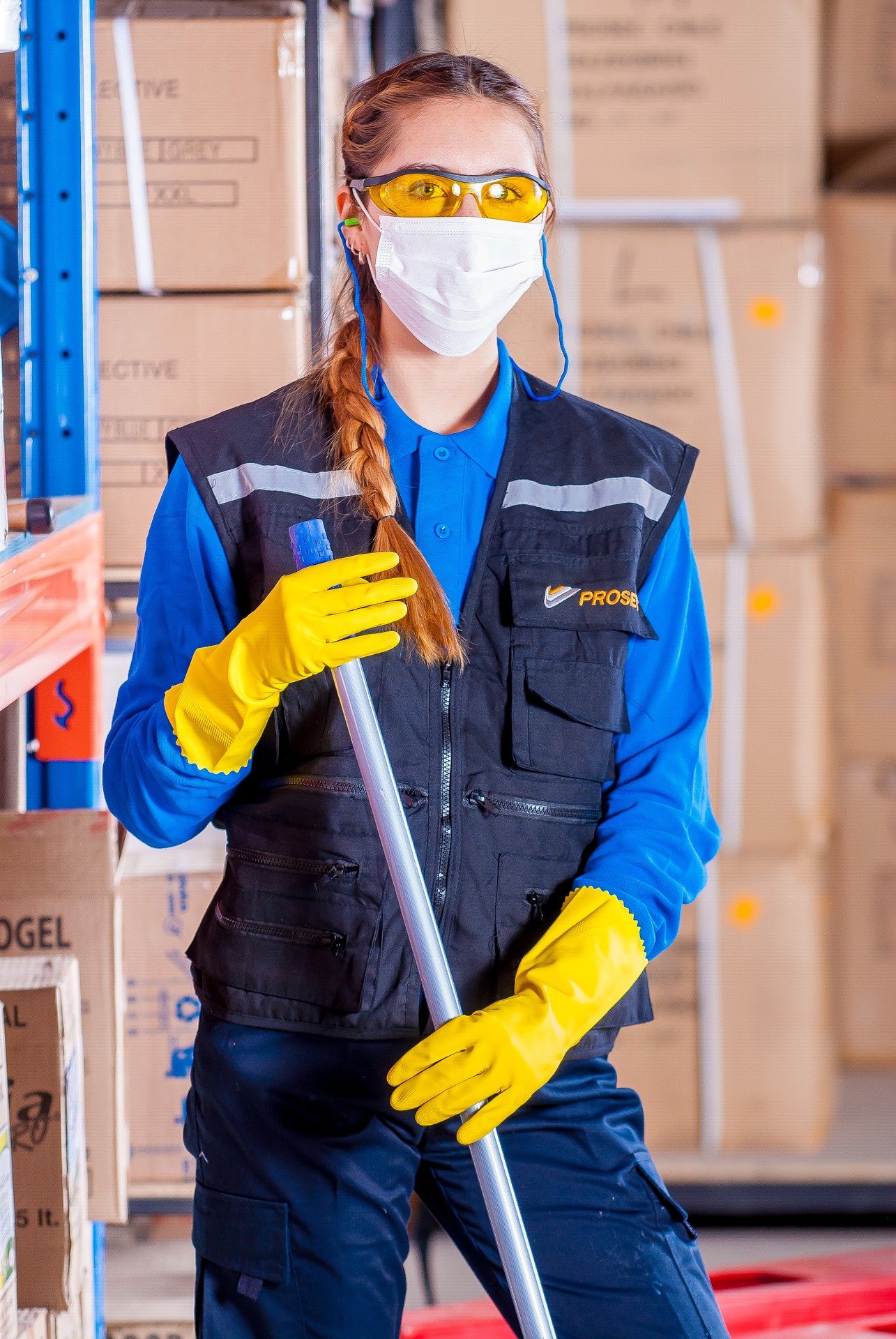Understanding Respiratory Safety Compliance
Nov 13th 2017
Respiratory Safety Compliance (OSHA 1910.134)
OSHA’s Respiratory Protection Standard (1910.134) is frequently one of the most cited standards after OSHA inspection. Dust, debris, and fumes can pose serious health risks for employees. This guide will help you identify respiratory hazards and help you develop a strategy for protection.

There are two ways to protect against respiratory dangers. The first is to keep workplace air clean and safe by using ventilation or air purifying systems. This method preferable when possible. The second, when the first is not possible, is to provide workers with protective respiratory equipment. Dust, fumes, fog, gases, smoke, vapors, and sprays can all cause significant harm to workers. If engineering controls cannot be taken (such as installing demonstrably effective ventilation systems), a respiratory safety program that trains workers and supplies them with protective equipment must be developed.
Developing a Respiratory Safety Program
There are several aspects to respiratory safety, and each one needs a written procedure. OSHA requires procedures for:
- Selecting respirators
- Medically evaluating employees required to use respirators
- Fit testing
- Proper use in routine and emergency situations
- Storing, cleaning, inspecting and maintaining respirators
- Ensuring air quality of atmosphere-supplying respirators
- Training employees to understand respiratory hazards
- Training employees to use respirators properly, including putting on and removing them
We shall look at each of these requirements in turn.
Selecting Respirators:
There are several types of respirators, each suited to particular circumstances.
Dust Masks can be used for dust, mist, and welding fumes. Dust masks do not provide protection from gases or vapors. Dust masks must fit properly and have at least two fitting straps. Single-strap dust masks are not compliant!
Half-face Respirators protect against vapors, acid gases, dust or welding fumes. Individual cartridges are designed for specific applications, so it is critically important to make sure your cartridges match potential contaminants.
Powered-air-Purifying Respirators (PAPR) use an internal, battery-powered fan to pull air through purifying filters. The purified air is then circulated through the mask.
A Self-Contained Breathing Apparatus (SCBA) is used for oxygen-deficient or otherwise immediately dangerous atmospheres. SCBAs have their own oxygen tank.

Medical Evaluation:
Not everyone can safely wear respirators. Breathing through a respirator is more difficult than breathing without a respirator. As such, employees who have asthma or other conditions that cause difficulty breathing may not be able to safely wear respirators. Respirators which cover the whole face may also present challenges to employees with vision problems. A medical evaluation is required to ensure that employees can perform their jobs safely while wearing respiratory equipment.
Fit Testing:
A secure fit is critically important to respiratory safety. If a tight-fitting mask is required, a seal check must be conducted to make sure workers are not exposed to atmospheric hazards. If a worker has a beard, it must be demonstrated that the beard does not interfere with the fit of the mask.
Proper Use:
Procedures must be written which indicate each respiratory hazard, its location, and the respirators required for safety. If an employer is unable to determine precisely how much exposure an employee may receive, the atmosphere should be considered immediately threatening to life or health, and PAPR respirators should be used. All respirators must be approved by the National Institute for Occupational Safety and Health (NIOSH).
Cleaning and Maintaining Respirators:
If a respirator is used exclusively by one employee, it must be cleaned as often as necessary to maintain a sanitary condition. If being used by multiple employees, the respirator must be sanitized each time a new employee uses it. A respirator must also be sanitized after each emergency use. General cleaning instructions are found in Appendix B-2 to OSHA’s Respiratory Protection Standard (1910.134). Manufacturer’s recommended cleaning procedures can also be used if the procedures are equally effective.
Respirators must be stored away from dust, debris, or excessive sunlight. Respirators must also be stored in a location that is accessible to the work area, in clearly marked compartments. Any special considerations recommended by the manufacturer should also be followed.
Inspections must occur before each use to ensure that each part of the mask, including the cartridges, straps, and breathing mechanisms work properly. Elastomeric parts should be checked for pliability and potential deterioration.
Training and Evaluation:
Respiratory safety training must be comprehensive and understandable. Each employee needs to understand:
- The limitations of respiratory devices.
- How to properly fit, maintain and store respirators, and the consequences of improper fit, maintenance, and storage.
- How to inspect, put on, and remove respirators safely.
Training must be provided by the employer, and must recur at least annually. Retraining must also occur whenever procedures are not followed properly.
Consistent evaluation is an important part of your respiratory safety program. Even with compliant training procedures and experienced employees, a proactive approach is necessary to maintaining safe conditions. One mistake or lapse in procedure can lead to serious injury. Employees and supervisors must both be engaged in the evaluation process. Workers who use respiratory protection may be able to identify problems or concerns that are not apparent to the supervisor.
For more information, refer to https://www.osha.gov/SLTC/respiratoryprotection/index.html.

